Valley Vibes
A New Way to Read an Area
November 1, 2005essay,
Jeanne van Heeswijk and Amy Plant started Valley Vibes in 1998, in association with chora, a research institute for architecture, landscape and urbanism. For four years, the inhabitants of an urban regeneration district in East London were given the opportunity to record, mix and broadcast the sounds of their events using the Vibe Detector. This registration of sound can be seen as a ‘journey’ through the district. The following is a description of the project and a selection of the logbook entries.
The Vibe Detecting Service Tool looks a little like a cross between a giant ghetto blaster and an ice cream trolley, and functions as a portable karaoke set, radio station and conferencing set. It’s a simple design, built from gleaming aluminium, small enough to fit in a domestic doorway, tall enough to stand or sit behind. Four trolley wheels ensure that it can travel through the streets to people’s private parties, the local hairdresser’s, the market place, the night-club, the latest poetry reading, school events, official meetings, debates and local festivals. Inside the Vibe Detector is a complete professional sound kit – a popular resource for playing records, tapes and CD’s and for mixing – sophisticated but ‘user friendly’. A dat recorder automatically makes a high quality recording of the material played through the equipment every time it is in action.
The Vibe Detector functioned for four years. In order for a broad local public to really benefit from the detector we offered people advice and publicity material for their events and provided a technician. Base venues, such as cafés and community centres, were found for the Vibe Detector and it was advertised through them and other local channels. It was offered free of charge to people in the area. In order to obtain it for the night, day or weekend, they only had to make a booking and we were at their service.
The Vibe Detector operated in the Lea Valley area, also known as London Sector A – a large demarcated strip within East London, stretching from Greenwich in the South to the Northern outskirts of Greater London. This area has been made a designated site for regeneration by the European Community and is therefore an area in flux. Research Institute chora analysed the area and applied their new methods for urban development to it. New policies, new architecture, new plans are required to cope with the social and demographic changes that have taken place over the years. The Valley Vibes project is part of this new planning method.
As a tool for researching this area, the detector was used by individuals and groups to stage events in public and private spaces, gently entering into a diverse range of territories. Entertainment was a deliberate and inherent element to the project – not only could people’s creative expression be celebrated through the events which they themselves staged, it also played a crucial role in mobilizing a demand for the detector. At the end of its journey the detector has been to almost 100 events and collected many aural documents, varying from discussions and storytelling to musical recordings originating from a range of personal tastes and social situations.
What can we learn about the area from this collection of vibes or atmospheres and what is the effect of re-injecting them back into the environment from where they came? Each recording stands as a trace of an action, a piece of cultural production: folk or mainstream, a protest, a rehearsal or a simple expression. These ethereal layers of sound represent the diversity of an area as they randomly uncover some of its richness.
Jeanne van Heeswijk and I are developing a process with which to distil images, text and sound from the information gathered. This is in order to create a web archive, made up of the collected sounds combined with a logbook of the whereabouts of the Detector and its users. This unique reading of the area has potential to serve as a tool for increased communication between organizations, individuals, local councils and urban planners, demonstrating the human desires, needs, aspirations and vital energies that naturally emerge when detecting vibes.
21.10.1998
Private poetry broadcast by O’Matsu Hana / Outside O’Matsu’s flat, Crossfields Estate, Deptford.
O’Matsu had seen the Vibe Detector in the Revival Café and had spoken to Jeanne and me about the project. O’Matsu is an upcoming local poet who is keen to get a career going through publishing her poetry and performing. She is Asian and a single mother of three young children. O’Matsu wanted to use the Vibe Detector to record a demo tape of her readings. With the help of one of the market traders, we pushed the Vibe Detector to her ground floor flat and parked it outside her front door. She read her poems from her bathroom sink, from where they were broadcast through the Vibe Detector across the estate. Several neighbours came out onto their balconies to listen to O’Matsu’s voice. Later she emerged from the bathroom with some records and CD’s, and sang along to tunes including Howard Jones’s Like to Get to Know You Well and What Is Love, Suzanne Vega’s Luka and Tom’s Diner and Sting’s Englishman in New York and Roxanne. O’Matsu collected some of these CD’s from her neighbours. Afterwards, she expressed how it was a great release and ‘better than doing housework’.
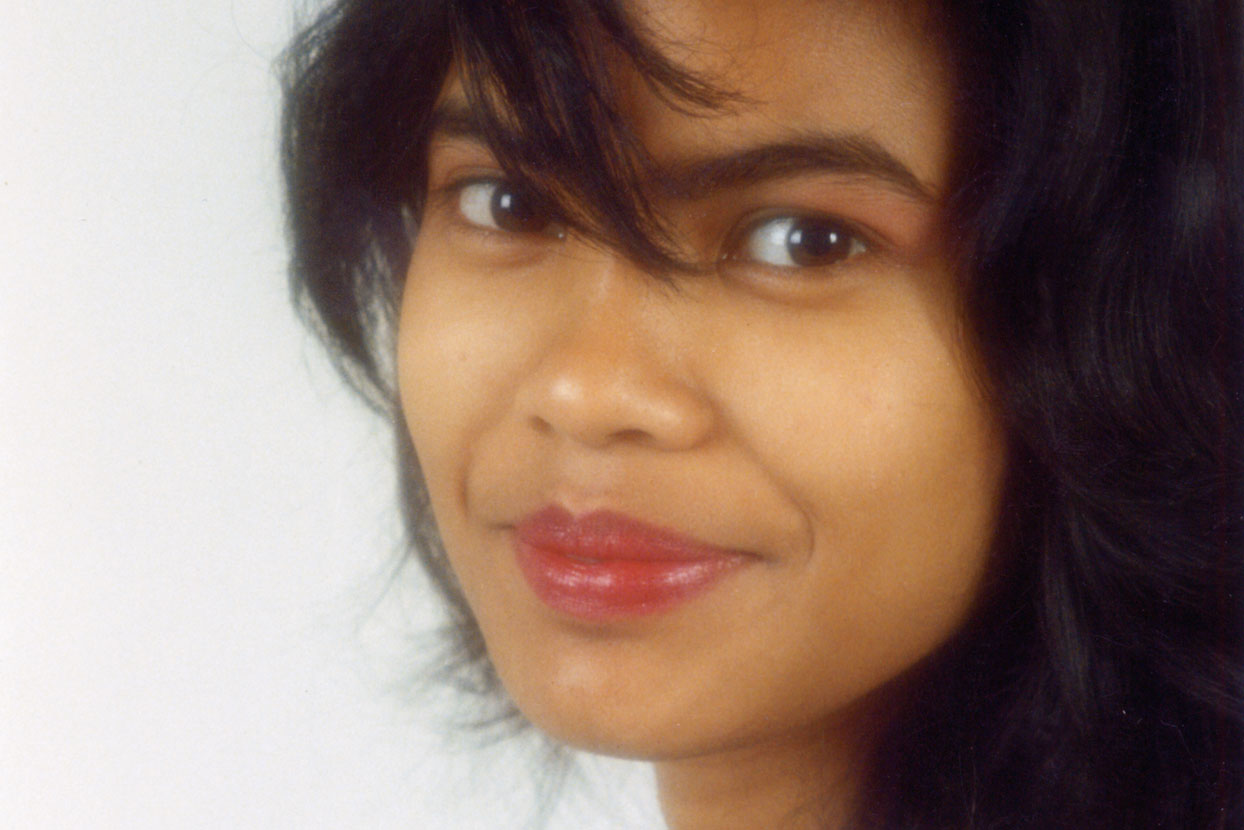
27.11.1999
Fund-raising party for motor neuron disease by Kieth Poli / Holland Hall, Oxford House.
Kieth discovered the Vibe Detector when he picked up a leaflet from somewhere in the area. He also came with his family to the Valley Vibes Day to see how it worked. Kieth’s sister had died of Motor Neuron Disease (Lou Gehrich Syndrome) two years before. Since then he had been engaged in various efforts, including running the marathon, to raise money for a charity connected to the disease. He decided to use the Vibe Detector for a fund-raising party in Holland Hall at Oxford House. His family and friends decorated the rather gloomy hall with bright slogans, balloons and Valley Vibes posters and he organized a raffle. The Vibe Detector was placed on the little stage. During the evening Kieth and a friend played contemporary chart toppers for a disco style atmosphere and the hall was soon full with an abundance of dancers and drinkers. Towards the end of the evening the winners of the raffle were announced by Kieth who shouted out and into the microphone, his voice booming across the hall. When it came to the big prizes, including a hi-fi and television, an auction began. The partygoers were in extremely generous spirits and large bunches of bank notes were happily passed to Kieth in exchange for the goods.
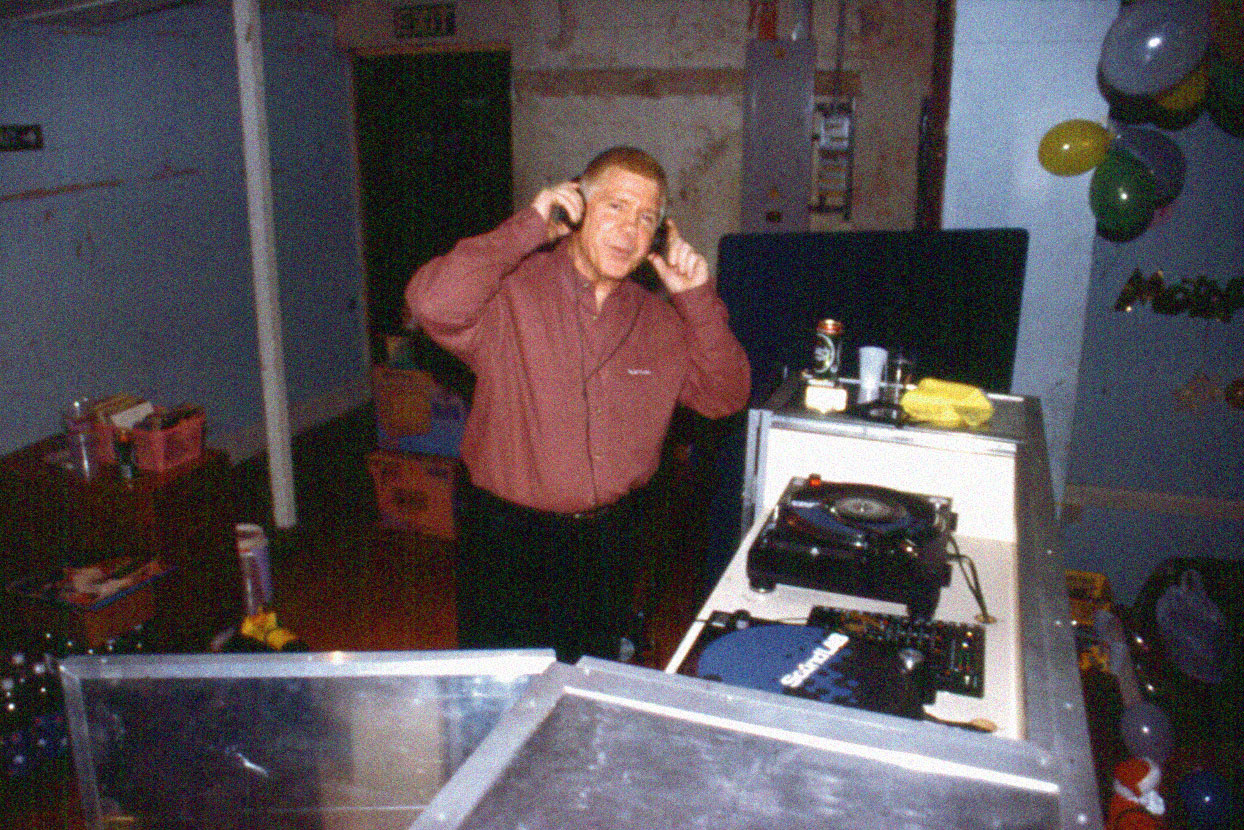
01.12.1999
DJ practice by Qaiser Iqbal and Edward Sunar / Holland Hall, Oxford House.
Qaiser and Edward are two local A level students who met about three years ago at secondary school. They had read about the Vibe Detector in the Bethnal Green Scene and had come to the Valley Vibes Day. For the two lads, the Vibe Detector presented a chance to practice their DJ skills in time for a party that was to take place at Tower Hamlets College where they study. They told me that they didn’t have much experience with mixing as they usually just played guitar. So I arranged a time for them to use Holland Hall to make as much noise as they liked. They played an experimental, eclectic mix, including diversities such as the Foo Fighters, The Beastie Boys, Bjørk, Led Zeppelin and popular Bengali music.
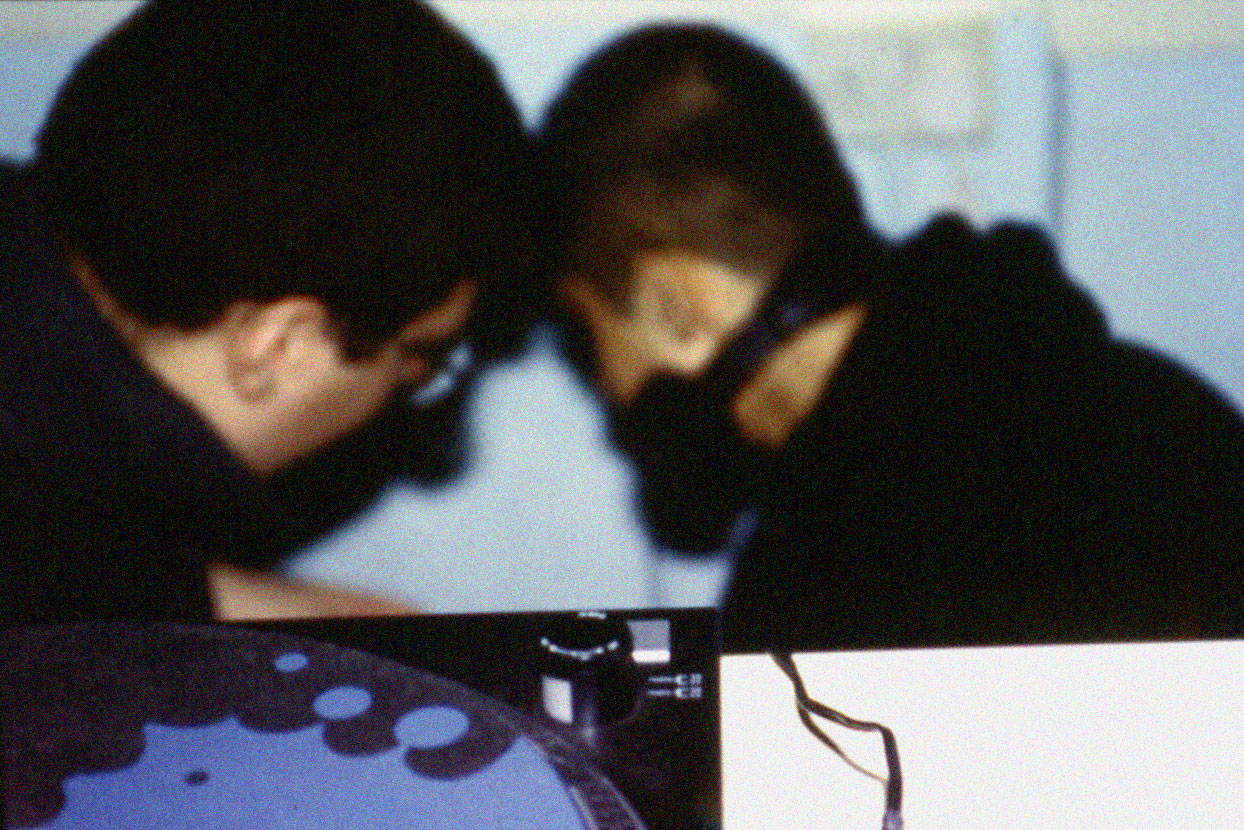
06.12.1999
Millennium recordings by Carol Johnston / Holland Hall, Oxford House / Booked by Carol Johnston.
Carol is one of the editors of the community newspaper and is often to be found in the café at Oxford House. After chatting to her about Valley Vibes she became inspired to use the Detector for a number of purposes. She was especially excited by the possibility of making a compilation CD. Carol stated that she had in fact written some tracks for The Orbital, in her father’s studio, for which she had never been credited and she was eager to re-claim her authorship. She also decided that tapes would make great Christmas and New Year presents for her friends. So again we used the privacy of Holland Hall to realize her ideas. Carol started off her recording session with a 7" of Silver Machine by Hawkwind, as a tribute to the Vibe Detector. She followed this with three tracks from a CD by The Orbital, stating, as part of her recording, that she had written them. Then she read out a piece of prose that she had composed called Ayres Rock. A seasonal touch was added by recording the record Christmas Carols at St Giles Church – by City of London Freeman’s School, Ashtead, Surrey (1970), Carol’s former school. She then read another of her writings, which had a more political nature: The Wall Must Come Down, followed by poetry by Michael Aitkin (Carol’s friend and head of Approach Poets, a local poetry group). Carol finished with another piece of her prose: A Mood for the Millennium. Later, I made several audiocassettes for her, according to her specifications, for her to make copies and present as Christmas and Millennium gifts.
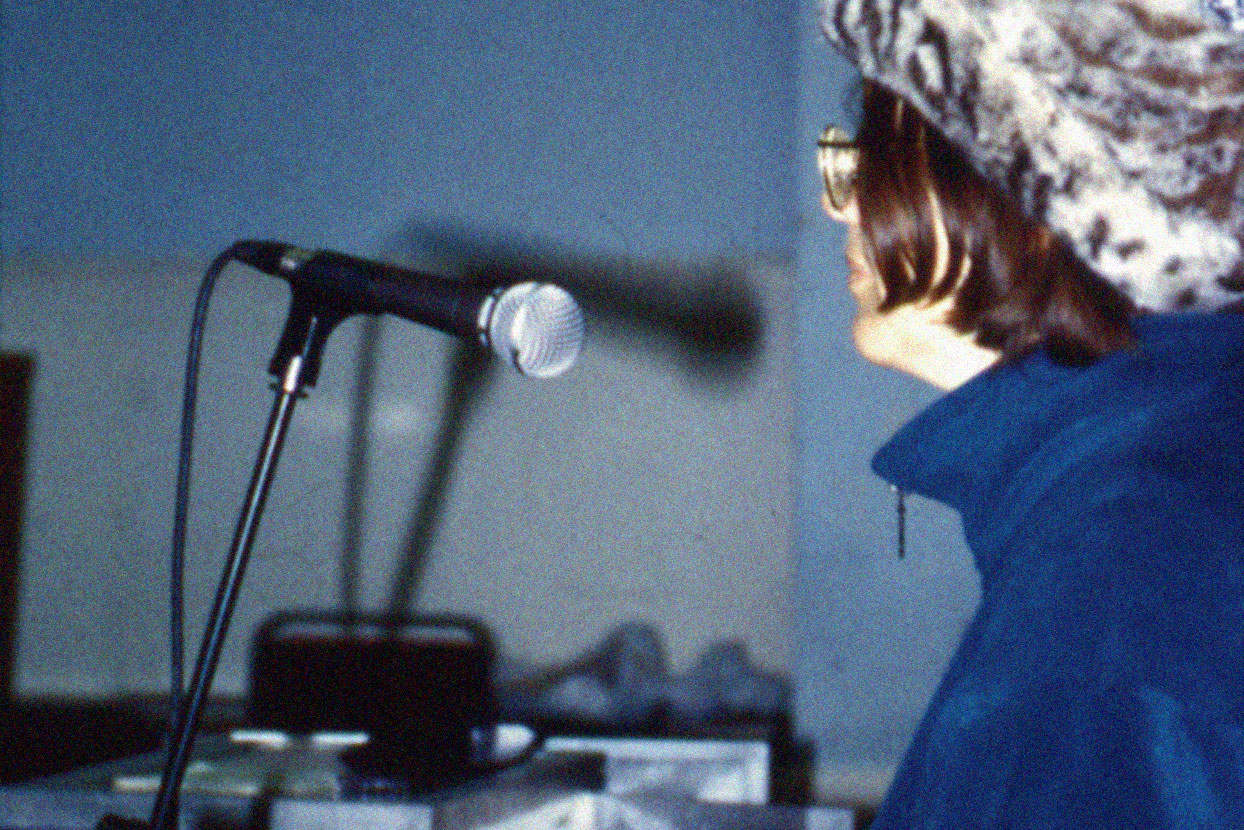
11.12.1999
Bingo club pensioners christmas party by Cranbrook Community Education Centre / Cranbrook Estate, Bethnal Green / Booked by Lesley.
Lesley runs the Cranbrook Community Centre practically single-handedly, on a low budget. She lives on the estate with her children. A Valley Vibes leaflet gave Lesley an idea for her Christmas parties. The Centre had been decorated with tinsel, there was a glistening tree and party hats and Martini awaiting the pensioners, who meet regularly for bingo. Lesley had brought some records and CD’s of her own and one chap had brought his tapes. They started with Christmas songs by Bing Crosby, Cliff Richard, Johnny Mathis, Chris De Burgh and others. While they ate their party food they requested Jimmy Rosselli and a compilation tape called Soft Lights and Music. There was a small raffle and then to get them in the mood for dancing Lesley played Elvis Presley, the Beatles, Pat Berry, Russ Conway and old East End pub songs of which they knew all the lyrics. They were a very lively group and the floor was full of couples dancing romantically together. Lesley got the pensioners into the singing mood by taking the microphone to their tables and encouraging them to sing along. Most sang with great pleasure and confidence. They finished the night with some more contemporary tunes by artists such as Britney Spears, Steps and Geri Halliwell.
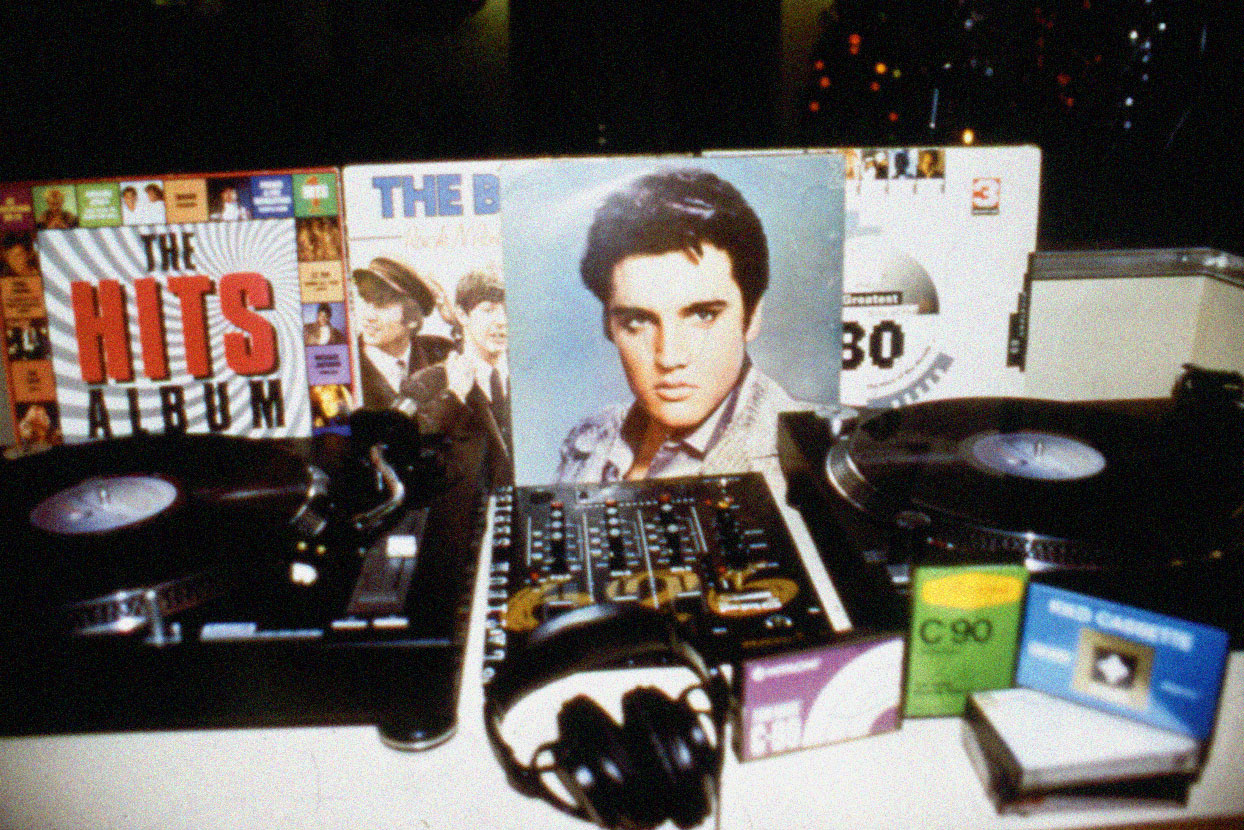
18.12.1999
Saturday club christmas party by Avenues / Christ Church Centre, Spitalfields / Booked by Marion Spears.
Marion runs a Saturday and school holiday club for Bengali children who live on an estate near Spitalfields Christ Church. She had received a leaflet through the post and had also come to Valley Vibes Day and wanted the Vibe Detector to liven up their Christmas party. It was still Ramadan. The children were low in numbers at the beginning, because they were sleeping late, or may have been tempted by the party food. More arrived later in the afternoon. The kids, who ranged between five and fifteen, loved to sing in the microphones and wear the headphones. They also discovered the joys of feedback and couldn’t resist pointing the microphones to the speakers. The boys and girls took turns singing. Their favourite songs were Sweet Like Chocolate by Shanks and Bigfoot and Rewind by the Artful Dodger, and they wanted to hear them over and over again. Marion and her co-worker, Kelly had organized some party games, so the volume on the Vibe Detector was turned up and down to catch the kids out during ‘Pass the Parcel’, ‘Musical Chairs’ and ‘Musical Statues’. Marion and Kelly told me that the kids tended not to listen to Asian music very much and that especially the girls were into the songs they played that day.
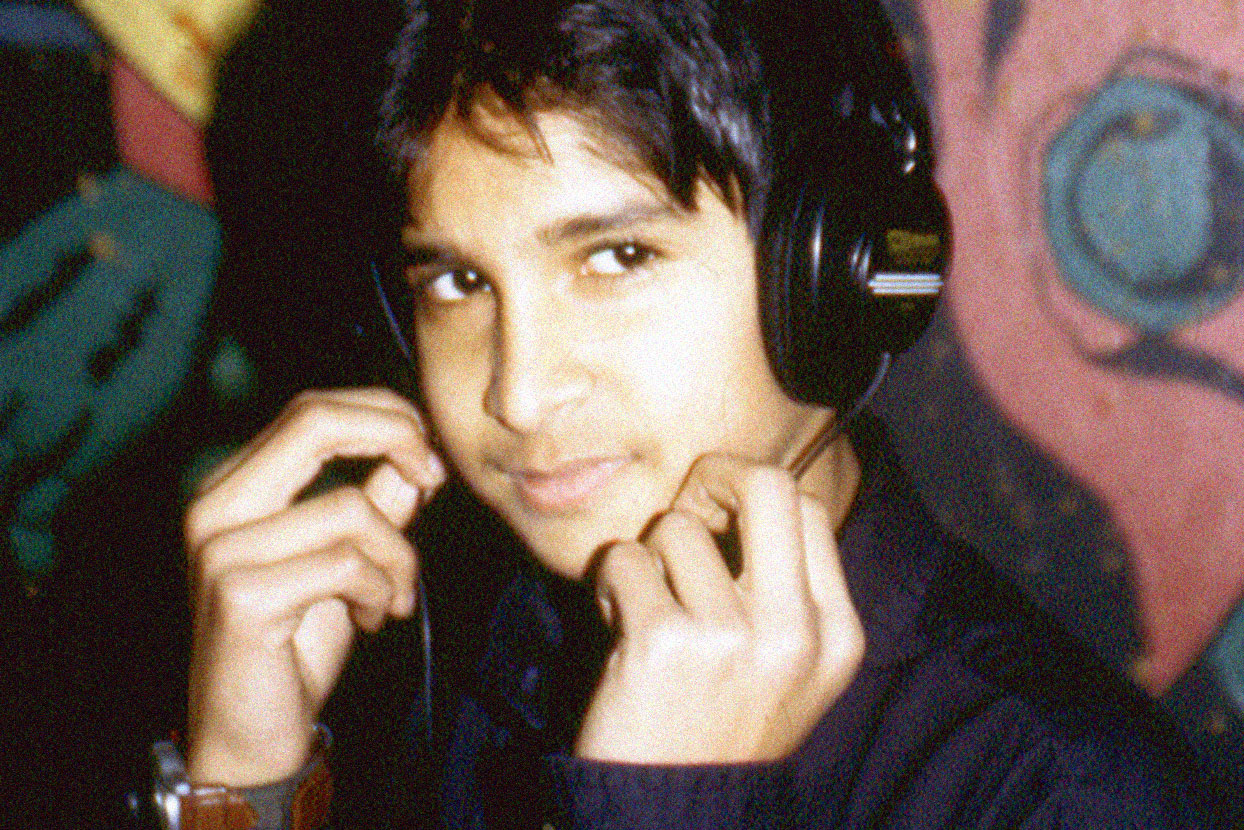
20.08.2000
Fun day by the Atlee Centre / Whitechapel / Booked by Marian Spears.
This fun day was organized for local children (predominantly Asian), some of whom attend the Atlee Centre youth group, others use the Christchurch Saturday Club. The children range from five to sixteen and are of mixed ability. The Atlee Centre also runs a group for special needs. Marian had organized a bouncy castle, face painting and juggling for the kids. The Vibe Detector was placed outside. The boys went home to get their records and a DJ session began. The smaller boys used the microphones for MC. The kids enjoyed the Vibe Detector at the Fun Day so much that they booked it for a talent contest they were organizing as part of their end-of-summer celebration. The contestants included twins who sang nursery rhymes and played the recorder. There was also a DJ and MC contest.
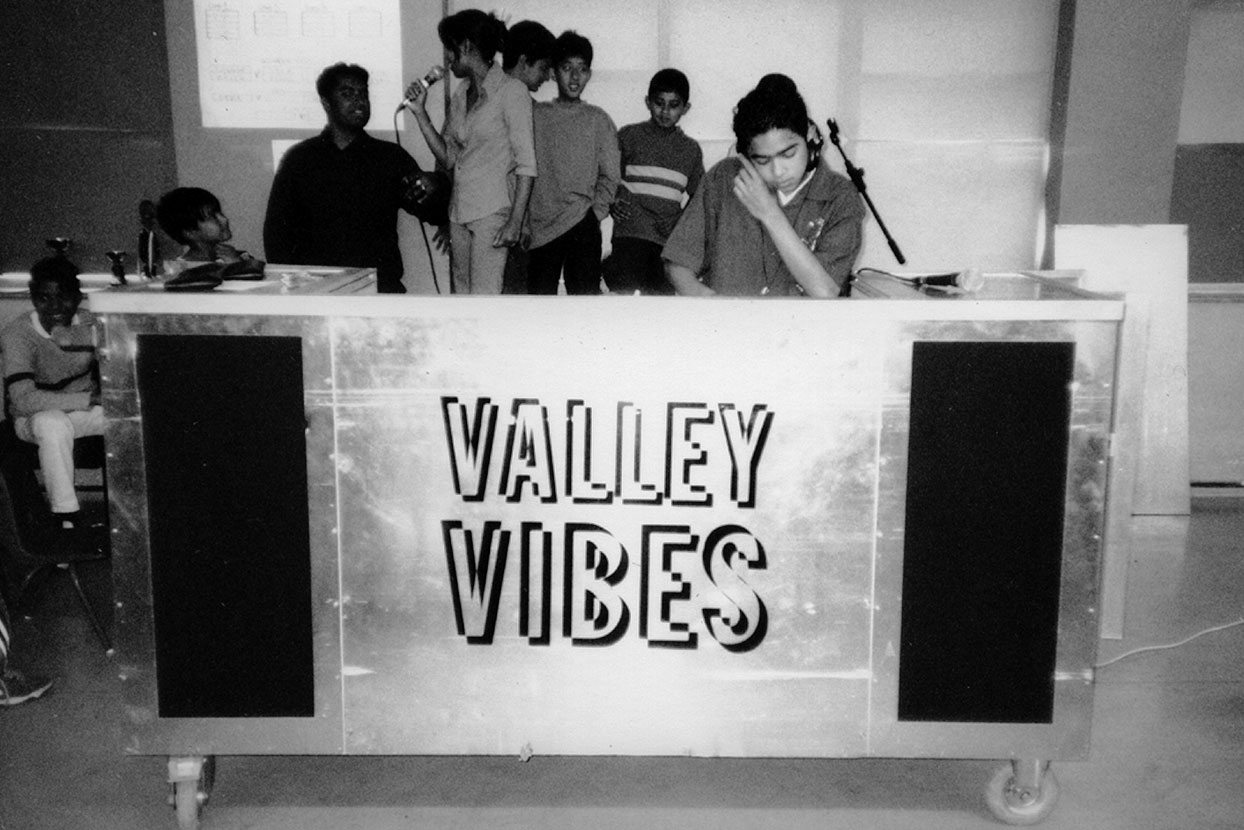
08.01.2001
Feed by Ella Gibbs & Muxa / Hackney City Farm.
On a beautiful sunny morning at 9.00 am the Vibe Detector stood in the middle of a farmyard, with microphones stretching out in all directions and into the animal pens. The farm workers came and went about their usual duties of feeding and hosing and sweeping. The hens and geese came noisily out of their coops for a morning wash and to stretch their wings. During opening time an hour later, all these sounds of morning ritual were amplified across the yard, so that visitors and animals could hear not only this, but live animal sounds simultaneously. These layers of real and recorded time created a pleasant confusion. As Bubbles the Turkey circled the Vibe Detector with incredible curiosity, visitors ate a breakfast of eggs on toast – which local artists Ella & Muxa collected from the farm’s café – and helped themselves to fresh coffee. Amanda, who works on the farm, introduced visitors to the rabbits, sheep, geese and pigs who all have names of their own. The Vibe Detector became a meeting point for eating people, while the early morning animal sounds were played over and over again.
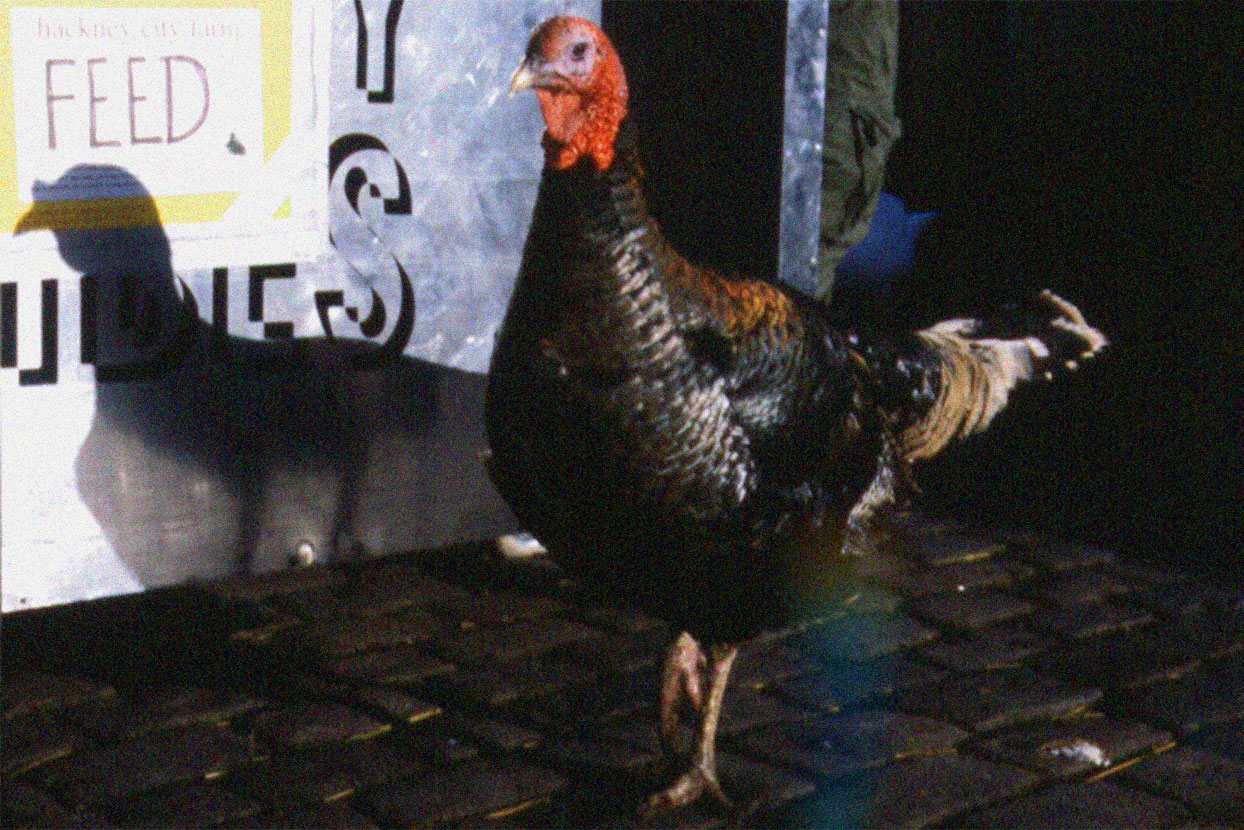
14.07.2001
Fin fest by Finsbury Park Community Festival / Booked by David Boville.
The first Fin Fest was blessed with a sunny day. People gathered in the park to see the attractions, which included two stages with live bands, art activities and a cycle carnival. The Vibe Detector was stationed in a separate area and was used by young people who had been attending DJ classes. So it was a good opportunity for them to test their skills in public. Soon there was a large gathering of young men around the system. Local Hare Krishna’s were serving food nearby. They used the Vibe Detector to amplify their chanting across the park.
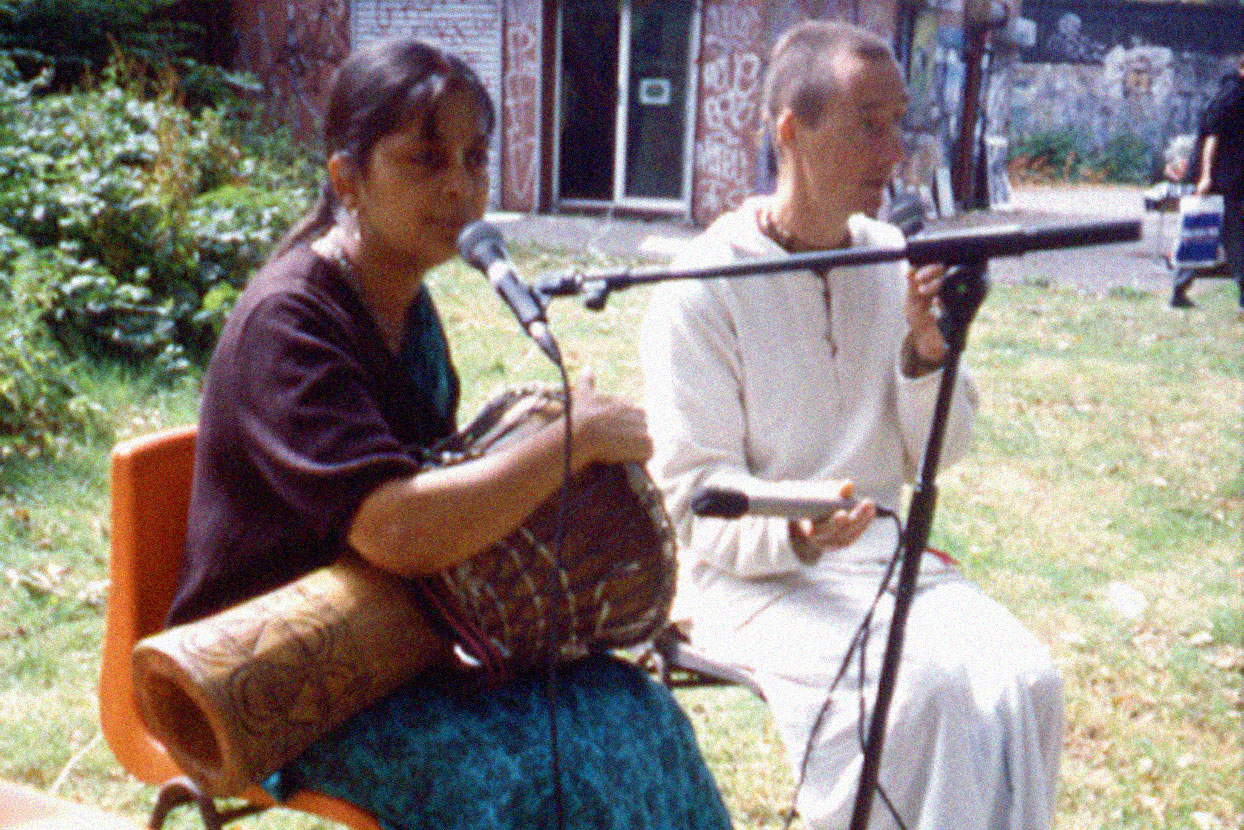
20.03.2002
Goan community open day by the Goan Community Centre / Keston Road / Booked by Candy.
Candy runs the Goan Community Centre in a Portakabin on Keston Road. Although she insists ‘it’s not a Portakabin, but your community centre’. This open day was to celebrate the Centre, raise awareness and create a fun day for everyone. The Vibe Detector was placed outside because the weather was fine. Speeches by Candy, Sarah Hargreaves from the parent / children charity Sure Start (who run activities at the centre) and local councillor Neave Brown were recorded. Inside, local groups displayed information about their activities. Outside, they played Goan music, sang mandanas and did line dancing. There was also a performance by an older man, who dressed in traditional costume and sang a Goan song that would have been sung while working in the paddy fields.
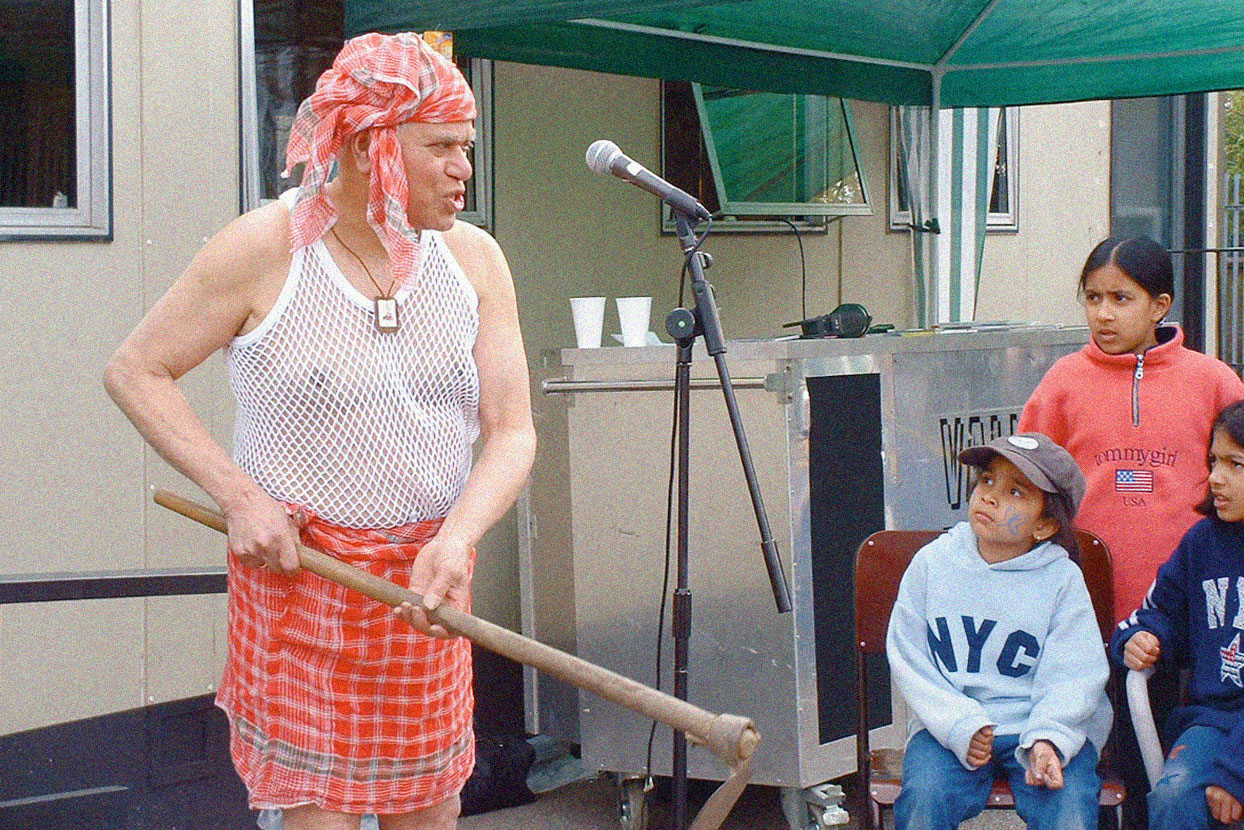
10–12.04.2001
Star week talent showcase by students of College of North East London / Booked by Eugene.
Eugene found out about Valley Vibes through Heskieth. Heskieth is the head of entertainment in the Student Union at the College of North East London. The college caters for school leavers and adults who want to take A levels or vocational courses. Star Week is organized by Heskeith during the half term break as a way to ‘remind people that the college is still here, otherwise they might not come back after the break!’ Lots of activities are planned to keep the students occupied, including a talent showcase for local people to express their performing abilities on stage. Eugene has run many community projects for young people. He set up the Talent Showcase and brought an expert in the music business (a producer) with him to help the students perfect their performances. He also brought Jan, a voice coach. The rehearsals consisted of warming-up exercises – to get the students loosened up, train their voices and gain confidence. On the big day they all performed in front of an audience to great applause.
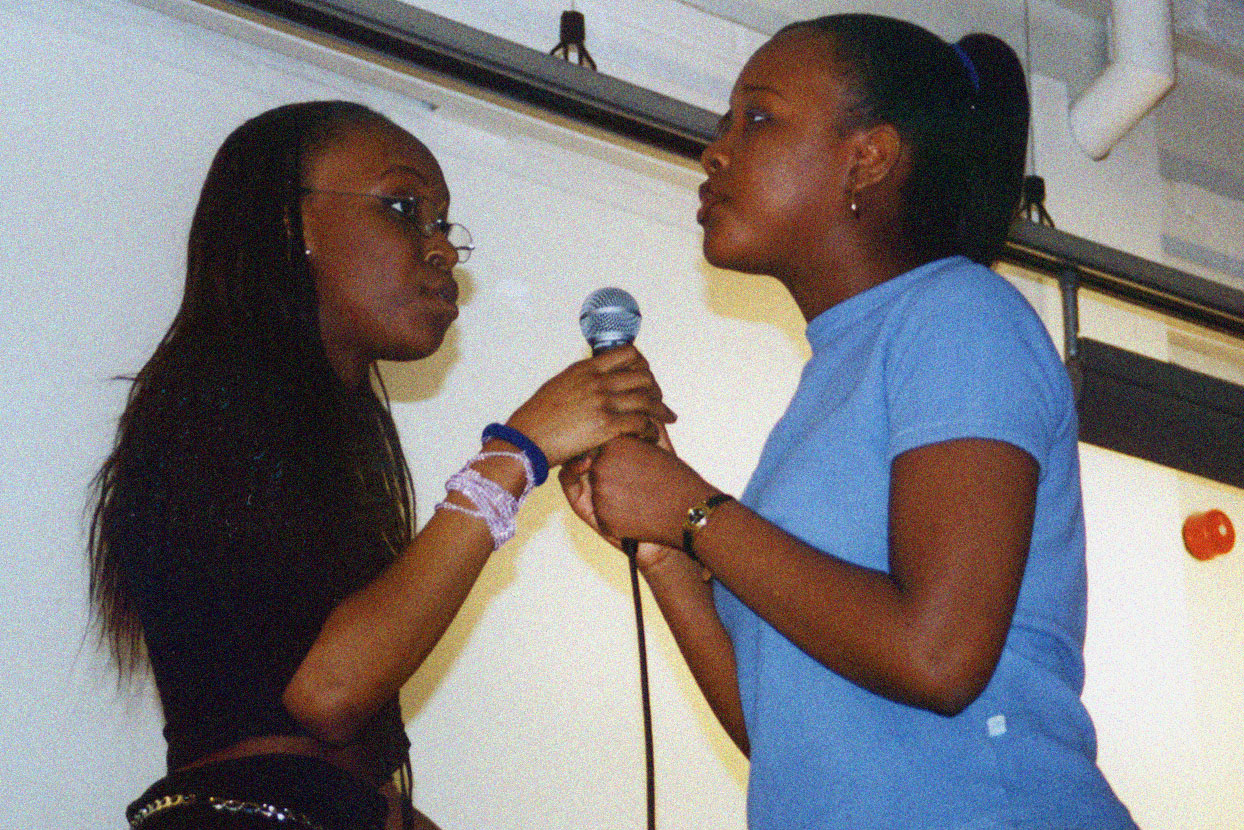
02.08.2001
An invitation to dance by Tara Sampy with Age Concern / Alexandra Palace, Wood Green.
Working with Age Concern Haringey and other Tottenham old people’s clubs artist Tara Sampy and I organized a glamorous tea dance at Alexandra Palace for 80 local elderly people. Local older people remember ‘Ali Pally’ with much fondness from their childhoods. A proper dance floor was laid and the hall was decorated with balloons and flowers. Everyone came in their best outfits and Tara made corsages for them to wear. Two elderly ladies who run an old time sequence-dancing club operated the Vibe Detector, playing their favourite dance tunes as people filled the floor with dance and laughter.
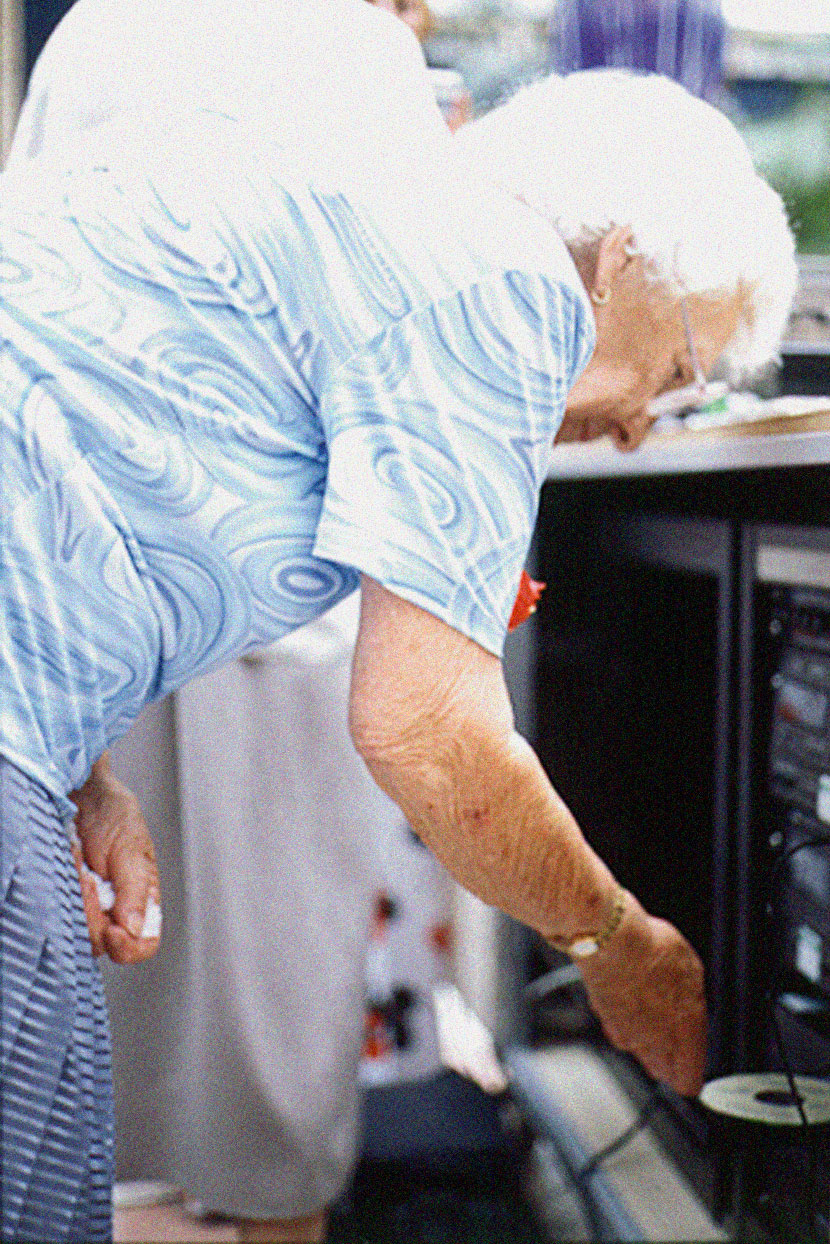
03.04.2002
Spaceman sid by Sure Start / Goan Community Centre / Booked by Richard.
Sure Start is a government organization that provides support for families with young children. They organized this morning workshop for under 5s with Vo – a singer-songwriter of children’s songs. Women employed by Sure Start introduced the workshop. They explained the aims of the organization and what they could provide for local families. And then the fun began. Spaceman Sid is a character invented by Vo who gets into to all kinds of adventures. The songs come with actions and parents are encouraged to join in. Vo gave a very energetic workshop for all the mums and toddlers – with lots of clapping, jumping up and down and arms in the air.
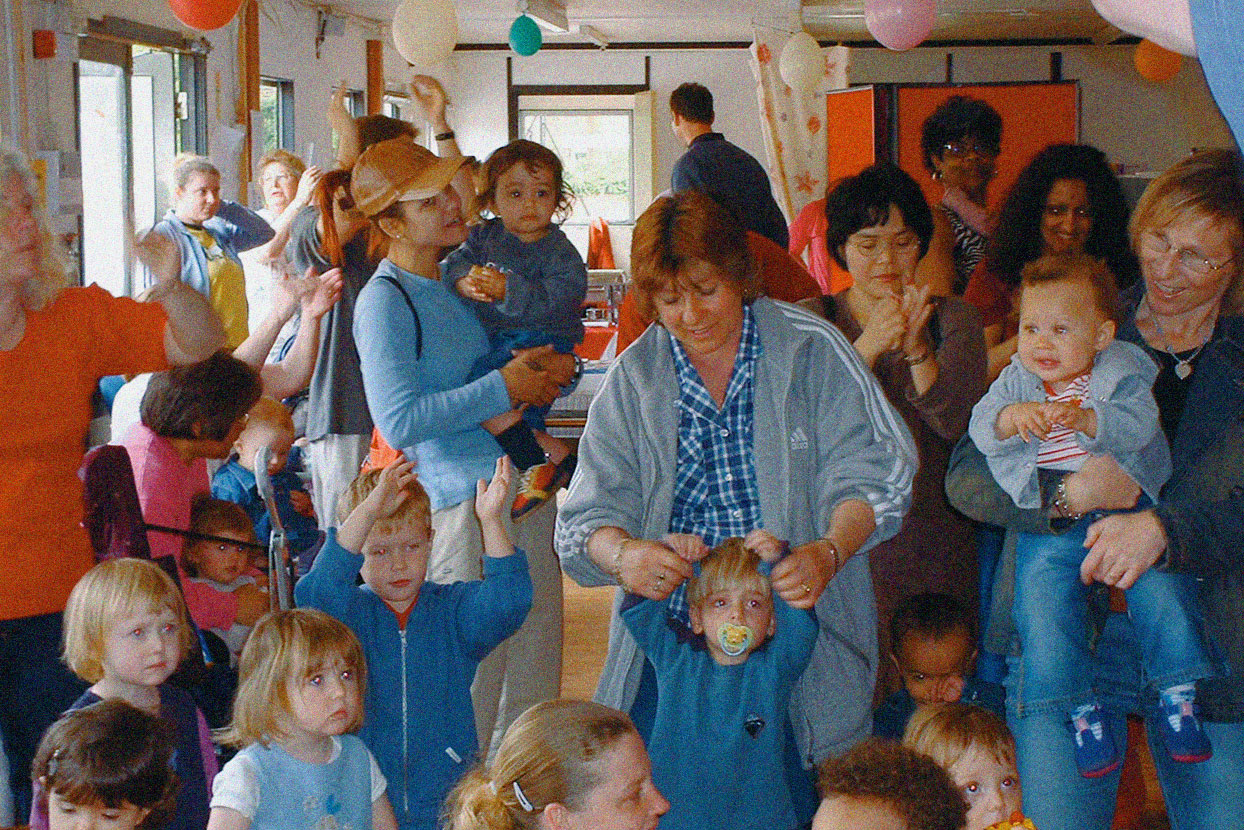
Amy Plant (UK) is a London-based artist with a community-oriented practice. She has produced self-initiated projects and commissions for galleries and in public space in the UK and abroad. Her works include Contact (Camden Arts Centre, London, 2000); Multi Stop Shop (Arc Percent for Art Scheme, Ireland, 2003) and Laburnum Pilot (The Drawing Room Gallery, Edinburgh, 2004) together with Ella Gibbs.